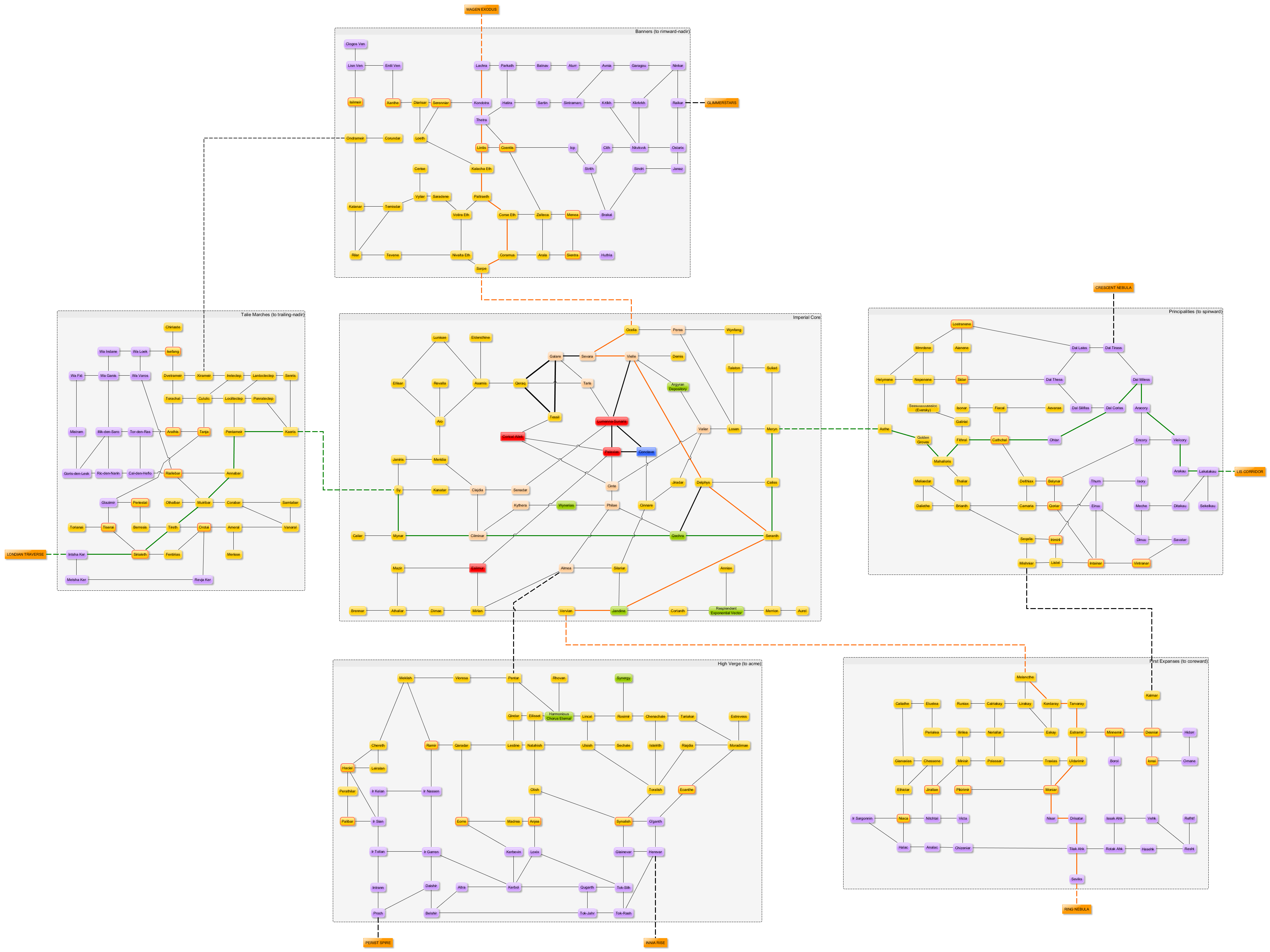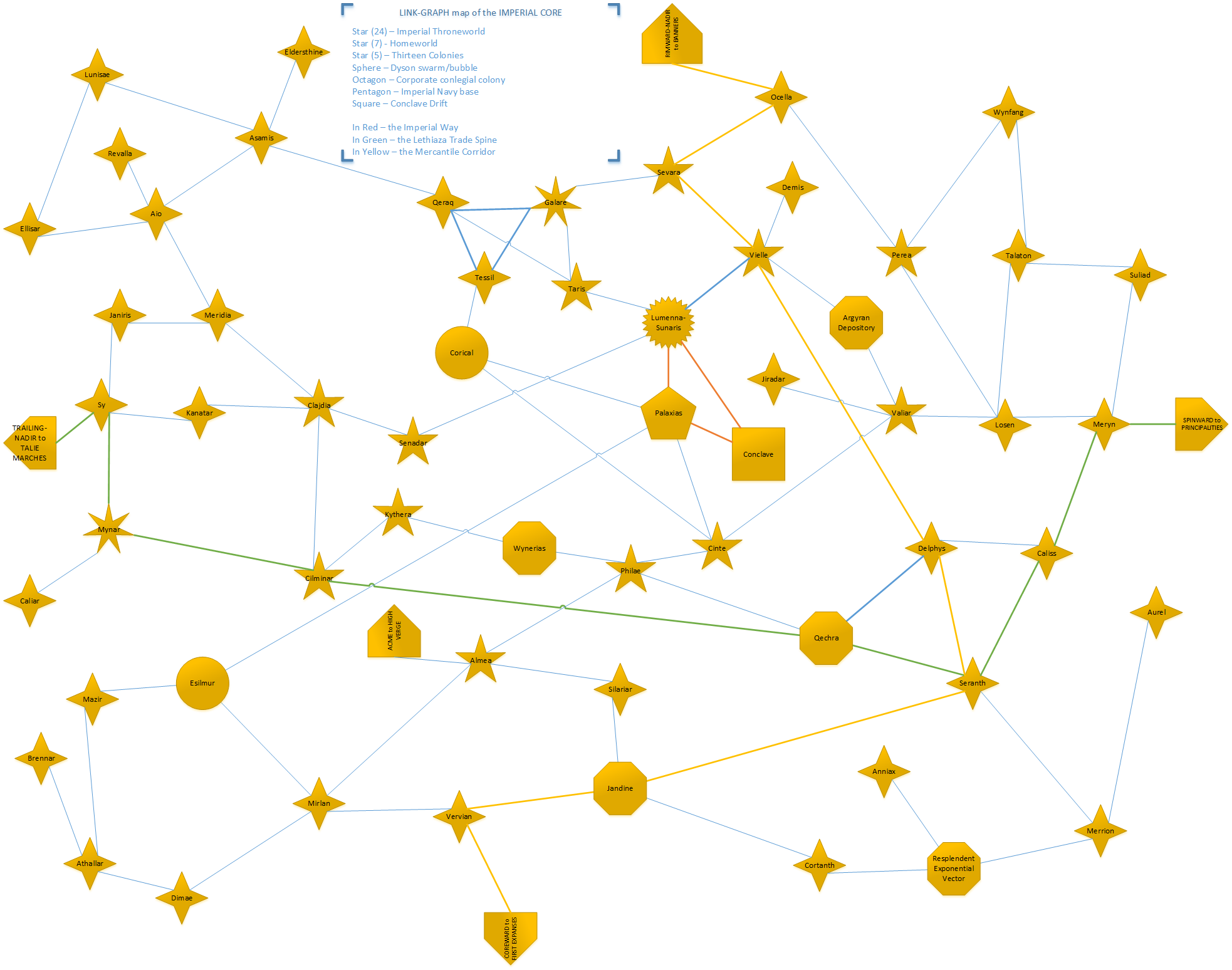Today’s gift for y’all is… a new map! A bigger map! A better map!
This map:
Which basically quintuples the amount of the Worlds that has been mapped on a system-by-system basis by extending that from the Imperial Core to the entire Imperial Fringe. Enjoy! (Although it’s big, so be aware when you click through.)
Key and notes:
- As is usual, it’s a link-graph map, i.e., like a metro map, and a projection of 3D space onto 2D space besides. Neither stellar distances nor relative positions are in the least accurate except in the most general possible sense.
- Each of the constellations (the Imperial Core plus the five constellations of the Imperial Fringe) represented is represented as a box containing the associated star systems. At the edges, the little orange boxes with CAPITAL LETTERS inside them represent links out to the other constellations of the Worlds.
- The majority of Imperial star systems are represented as GOLD nodes. The exceptions to this are:
- Certain important systems highlighted in RED (the throneworld, the IN Prime Base, the Cirys sphere and Cirys swarm); and
- The system dedicated to the Conclave of Galactic Polities, indicated in BLUE; and
- Imperial conlegial systems, indicated in GREEN; and
- The original Thirteen Colonies (reached subluminally) represented in PALE GOLD.
- Non-Imperial star systems are represented as PURPLE nodes.
- Stargate pairs connecting systems are represented as SOLID lines. Stargate pairs connecting entire constellations are represented as DASHED lines. Crossing lines, as per the symbology, don’t actually intersect.
- Arterial routes, i.e., extra-high-capacity stargate pairs, are represented as THICK lines.
- The ORANGE line represents one major interstellar trade route passing through the Empire, the Mercantile Corridor. The GREEN line represents the other, the Lethiaza Trade Spine.
- GOLD systems with a RED border are Imperial systems that connect directly to non-Imperial systems and as such form part of the Interface Defense Matrix. Also, when you get there, you have to clear immigration.
Enjoy!
Special extra challenges for the detail-oriented reader with some time to kill:
…how many different ante-Eldraeic roots for “world, place, land, planet, etc.” can you identify from the names of the various Imperial worlds seen on this map? And how many of those are actually exotic-species routes?
…how many and which extra-Imperial polities can you draw lines around based on commonalities of name scheme among the non-Imperial worlds?
Answers and questions in comments, please!
(P.S. Yes, that’s “Kerbol System” down there in the High Verge; having thrown that reference in as an homage, I’m hardly going to reverse myself now. Any assumptions one might make, however, about its planets, inhabitants, space program, or other details, however, are distinctly non-canonical.)


